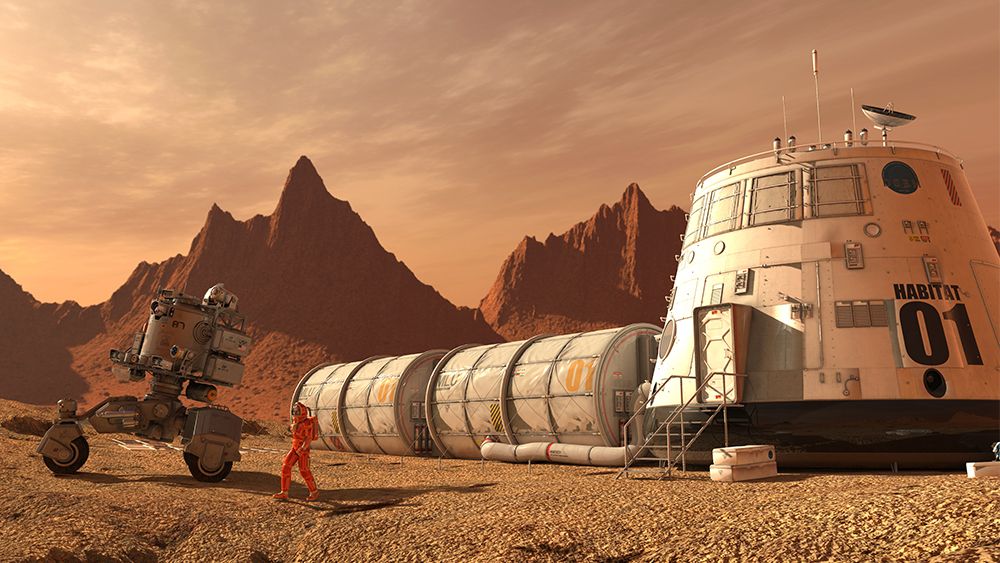
NASA Invests in Building Landing Pads and Structures Out of Moon Regolith
Article by Andy Tomaswick March 4, 2021 (universetoday.com)
• The NASA Institute for Advanced Concepts (NIAC) Fellowship is considering sixteen ‘Phase 1 selectees’ to flesh out advanced Moon mission concepts ranging from a solar system-wide “Pony Express” to autonomous deep drilling rigs on off planet worlds. One of these proposals is entitled ‘Regolith Adaptive Modification System (RAMs) to Support Early Extraterrestrial Planetary Landings (and Operations)’. The RAM would allow flexible landing pads flown down to the lunar surface and anchored directly to the regolith (rocks) with minimal effort, ensuring that the pads won’t simply blow away the first time they are hit with a booster engine blast.
• The RAM proposal comes from Dr. Sarbajit Banerjee, a chemist at Texas A&M. The process of making use of materials found on celestial bodies in the solar system is known as ‘in-situ resource utilization’. A previous NIAC program foused on developing the flexible landing platforms. The RAM component focuses on anchoring the platform to the lunar surface. This provides an early-stage infrastructure that would be useful before larger infrastructure such as sintering or geopolymerization equipment can be put in place.
• RAMs also employs a novel anchoring technique centered around “precursors” that weld anchor points to the underlying regolith on the surface. Other precursors can be directly introduced into the regolith itself to stabilize certain regions directly. The precursors are made up of a combination of nanothermites and organosilanes. When heated, they blend together with the surrounding regolith to create much more stable structures. Interesting, the source of much of the energy needed to create the bonds that stabilize the material is actually pulled from the material itself.
 Materials are a crucial yet underappreciated component of any space exploration
Materials are a crucial yet underappreciated component of any space exploration

program. Without novel materials and ways to make them, things that are commonplace today, such as a Falcon 9 rocket or the Mars rovers, would never have been possible. As humanity expands into the solar system, it will need to make more use of the materials found there – a process commonly called in-situ resource utilization (ISRU). Now, the advanced concepts team at NASA has taken a step towards supporting that process by supporting a proposal from Dr. Sarbajit Banerjee, a chemist at Texas A&M. The proposal suggests using lunar regolith to build a stable landing pad for future moon missions.

The proposal, entitled Regolith Adaptive Modification System (RAMs) to Support Early Extraterrestrial Planetary Landings (and Operations), focuses on providing early-stage infrastructure that would be useful before larger infrastructure such as sintering or geopolymerization equipment can be put in place.
Alternatively, RAMs uses a novel anchoring technique centered around “precursors” that can weld anchor points on the surface to the underlying regolith. Other precursors can be directly introduced into the regolith itself to stabilize certain regions directly.
The precursors are made up of a combination of nanothermites and organosilanes. When heated, they blend together with the surrounding regolith to create much more stable structures. Interesting, the source of much of the energy needed to create the bonds that stabilize the material is actually pulled from the material itself.
FAIR USE NOTICE: This page contains copyrighted material the use of which has not been specifically authorized by the copyright owner. ExoNews.org distributes this material for the purpose of news reporting, educational research, comment and criticism, constituting Fair Use under 17 U.S.C § 107. Please contact the Editor at ExoNews with any copyright issue.
Dr. Sarbajit Banerjee, geopolymerization, Moon Regolith, NASA, NASA Institute for Advanced Concepts, precursors, Regolith Adaptive Modification System (RAMs) to Support Early Extraterrestrial Planetary Landings (and Operations), Texas A&M